A Poster Session was held at the ICBF and Sheep Ireland Genetics conference on Friday the 17th January at the Heritage Hotel. The Poster Session allowed researchers to present and discuss their current research with attendees at the conference.
It was fantastic to see over 28 posters on display showcasing topical and innovative research.Many thanks to the former CEO of ICBF, Brian Wickham, who sponsored a €1,000 travel bursary for Best Poster, won by Paul Smith, and a €500 travel bursary each for two runners-up, won by Fíona Dunne and Ben Lahart.
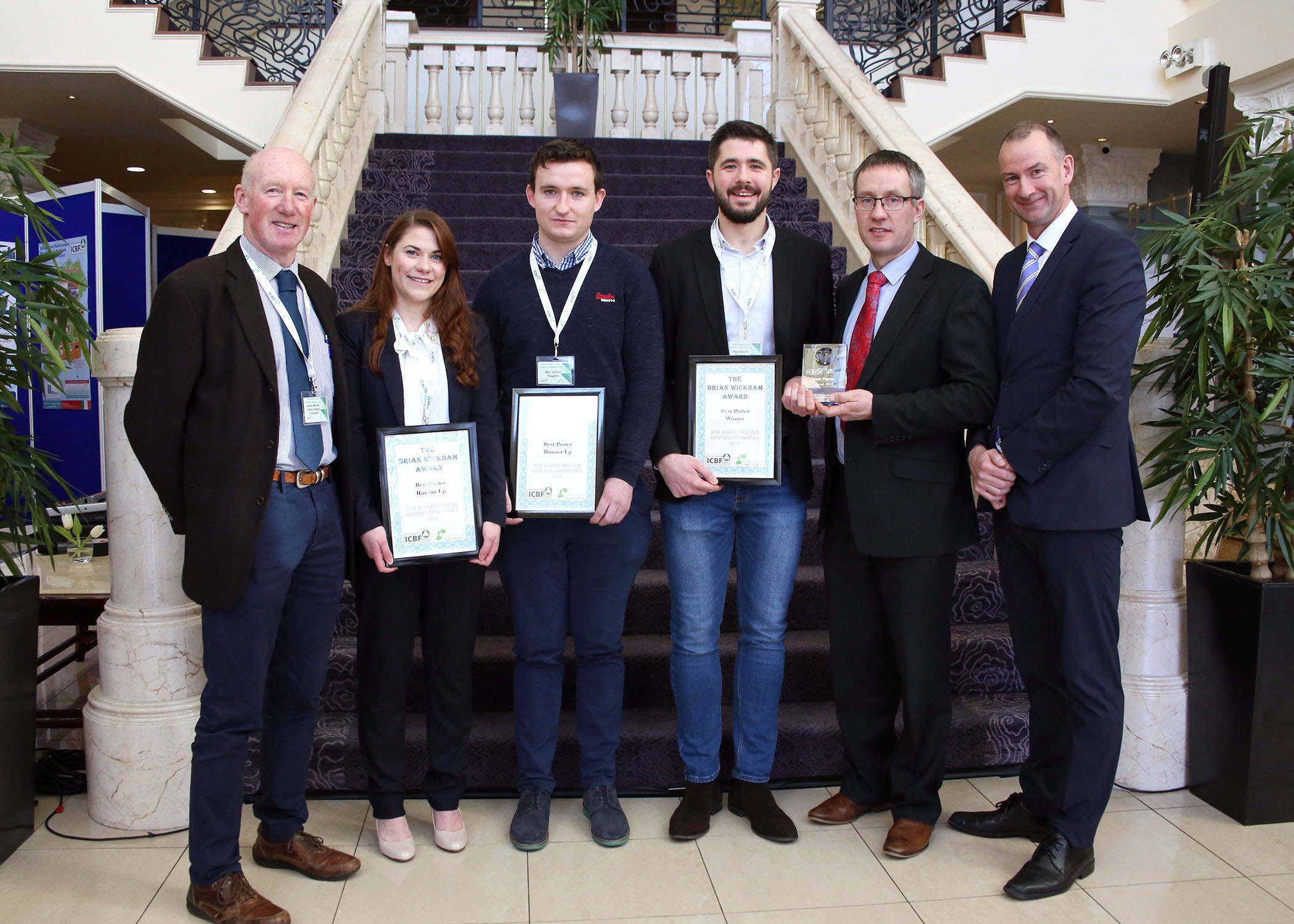
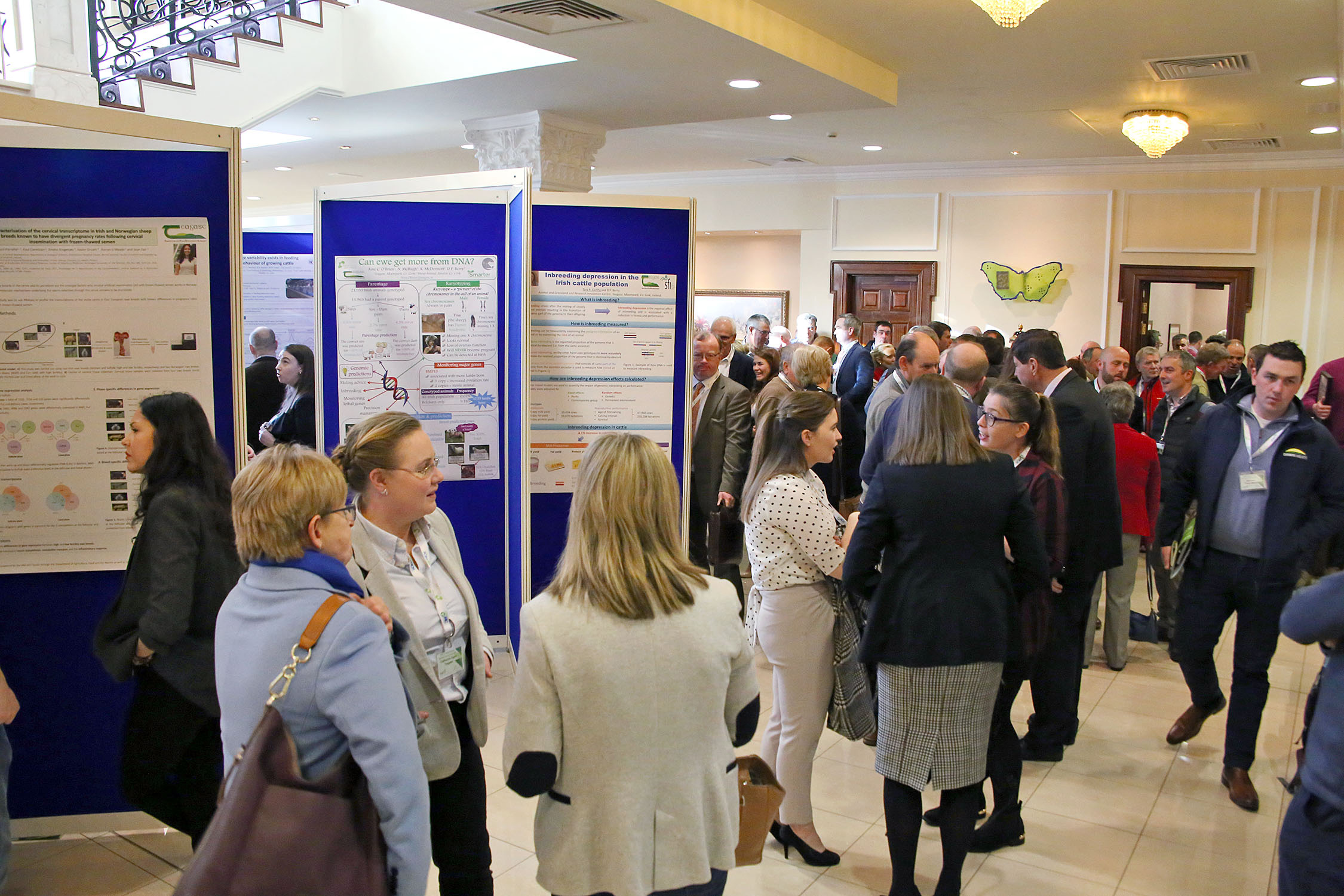
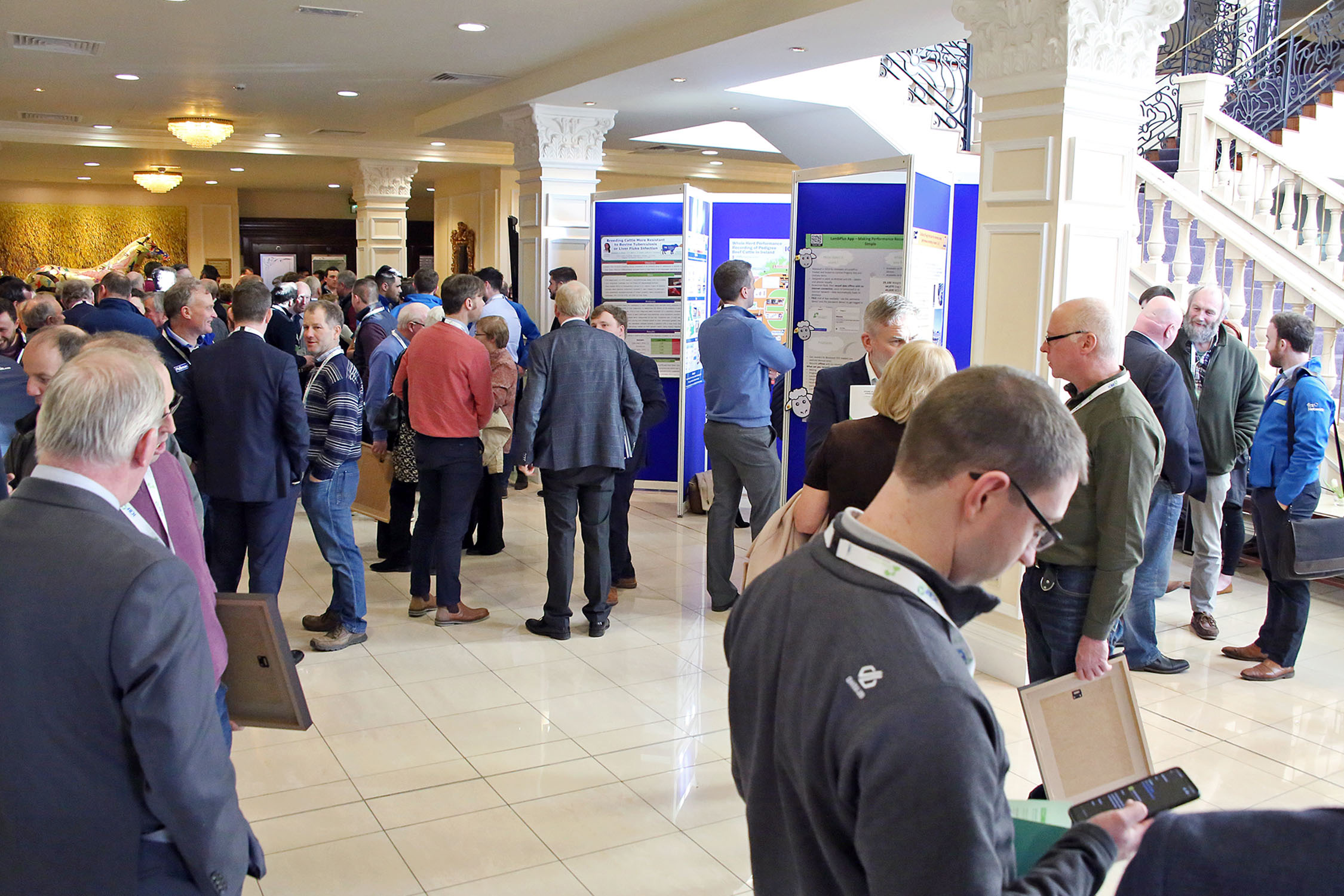
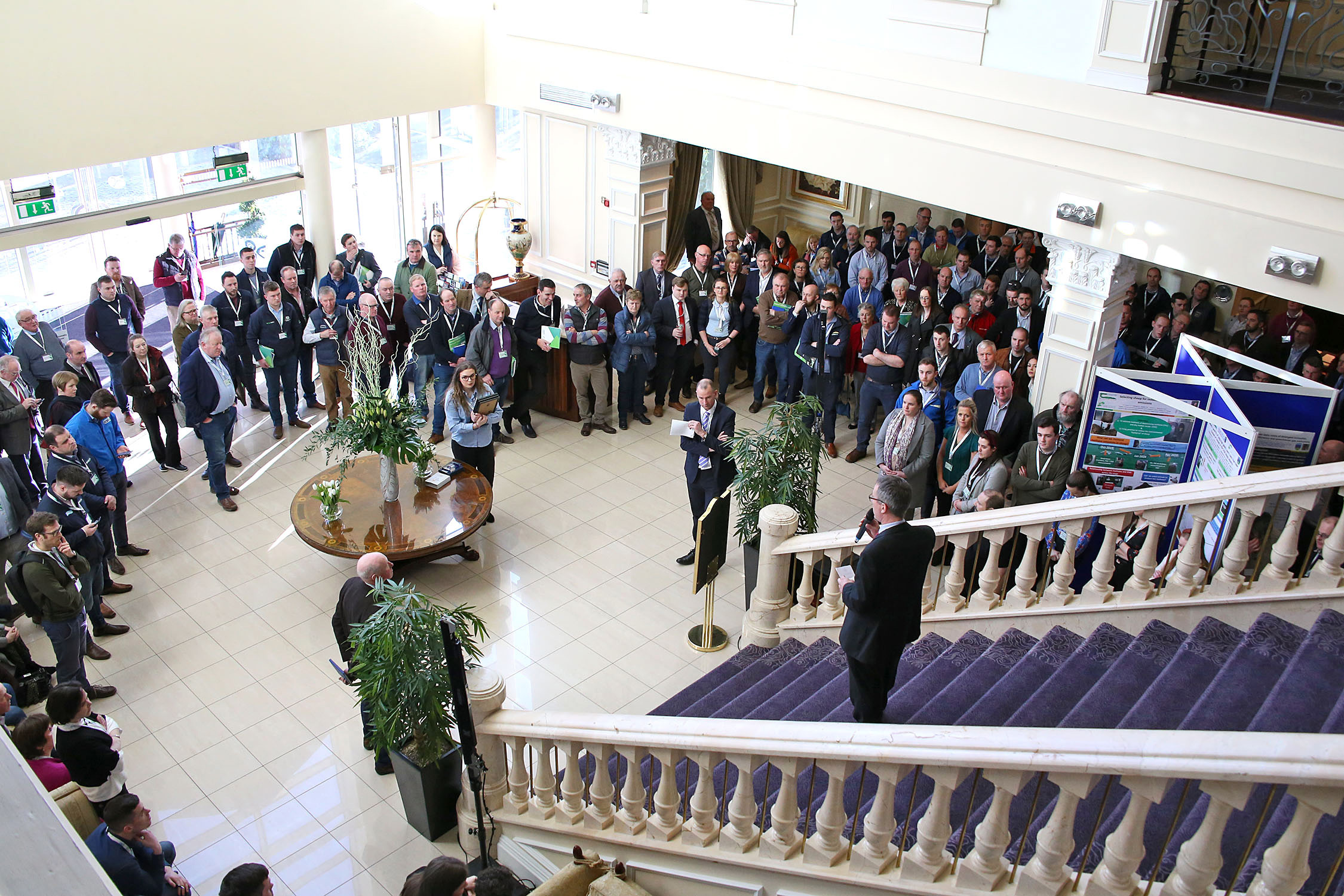
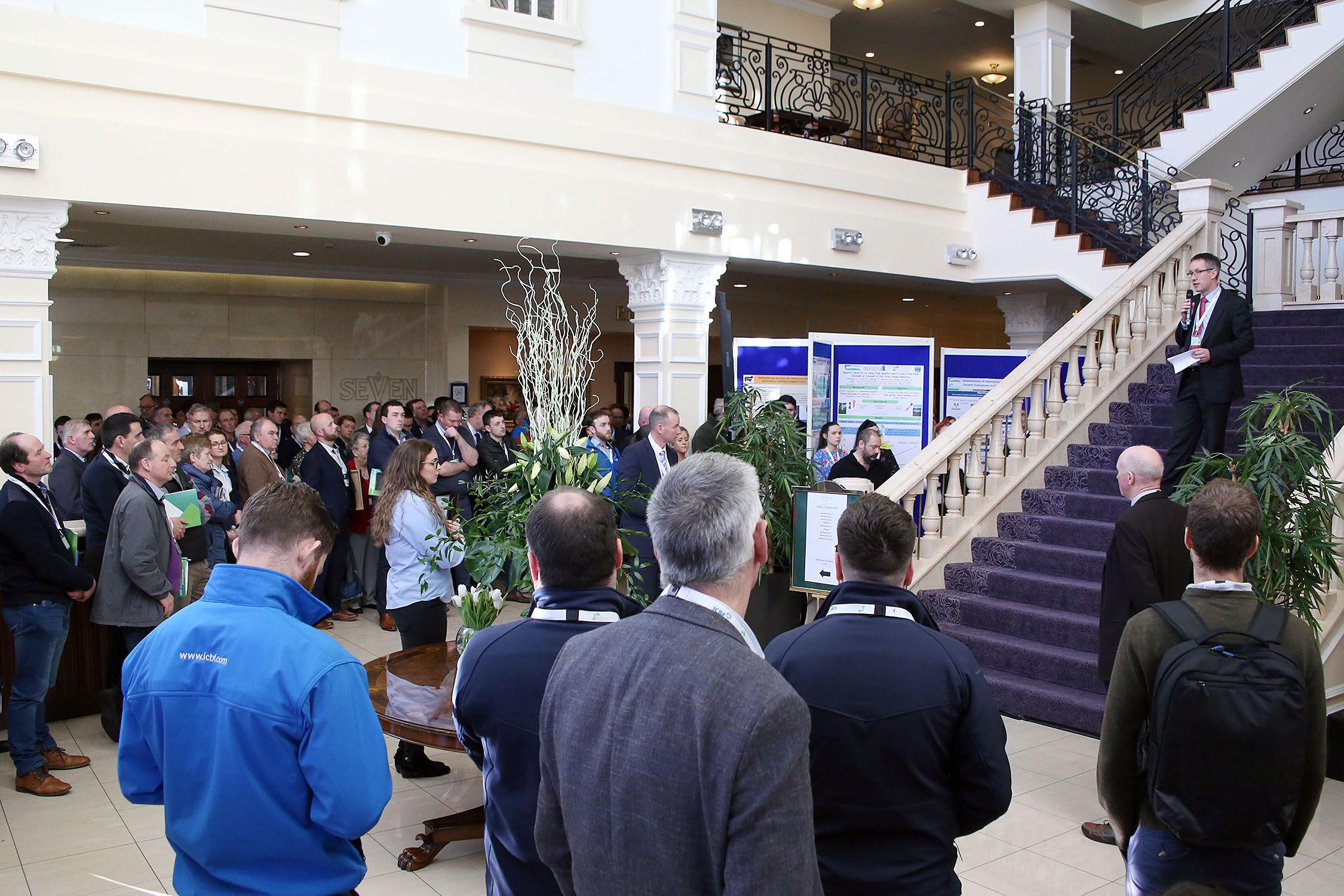
Paul Smith is currently researching ‘The relationship of methane output with the Euro-Star Breeding Index’ in conjunction with Teagasc Grange.
Paul explains ruminant animals possess the unique ability to convert plant matter into high quality meat and dairy products for human consumption due to the microbial ecosystem residing in the rumen. Microbial fermentation conducted in the rumen accounts for ~19% of Irish greenhouse gas (GHG) emissions, with methane and carbon dioxide the predominate gases produced. Potential to breed animals for reduced methane production exists however an enhanced understanding of the biological processes controlling methane production is required.
Teagasc, along with ICBF and UCD are members of the FACCE ERA GAS funded international research consortium, RumenPredict, which aims to link the rumen microbiome and host genetics to feed efficiency and GHG emissions. Findings from this study have the potential to identify animals with a greater genetic propensity to efficiently utilise feed while minimising their impact on the environment.
Fíona Dunne’s poster title was ‘Providing transparency in times of uncertainty’. Fíona is currently researching a new index to rank cattle for carcass revenue in conjunction with Teagasc Moorepark.
Fíona explains the framework behind the Beef’s Own Worth (B.O.W) index was developed to rank growing cattle for carcass revenue. To predict the animal’s B.O.W value we included various pieces of the puzzle including crossbreeding effects (i.e., heterosis), dam age and parity effects, twin and gender effects as well as their own genetic merit for the respective traits.
Only traits relevant to growing cattle were considered, namely carcass traits (weight, conformation and fat), feed intake and docility. By putting a value on calves based on their own expected merit for carcass revenue, more informed decisions can be made when buying and selling calves.
Ben Lahart is currently researching ‘The repeatability of feed intake and efficiency in beef cattle offered high-concentrate, grass silage and pasture-based diets’ in conjunction with Teagasc Moorepark.
Ben explains feed intake and efficiency in beef cattle is generally derived indoors on high-concentrate diets. Within temperate regions such as Ireland, however, most of a growing beef animal’s lifetime dietary intake comes from grazed grass and grass silage. The objective of the current study was to assess the repeatability of both feed intake and efficiency across three dietary test periods comprising; grass silage plus concentrates, grazed grass and a high-concentrate diet.
The results demonstrate that associations for feed intake and residual feed intake between grass silage-based and grazing or high-concentrate diets were moderate-to-weak; however, the traits were not correlated between grazed pasture and high-concentrate. Therefore, evaluating feed intake and efficiency indoors on high concentrate diets may not be optimised for pasture-based beef production systems. Further research is required to confirm these findings.
You can view these posters and all of the posters that were on display at the conference by clicking here.
